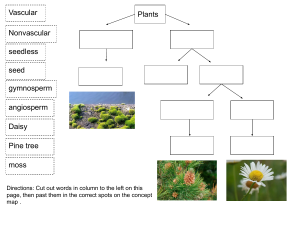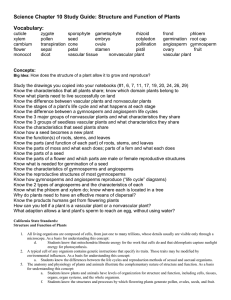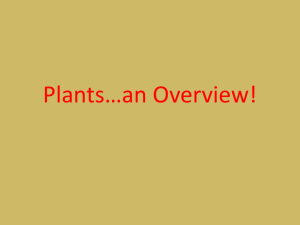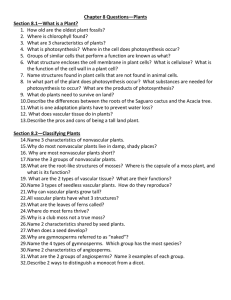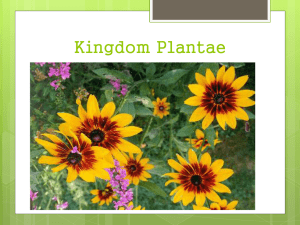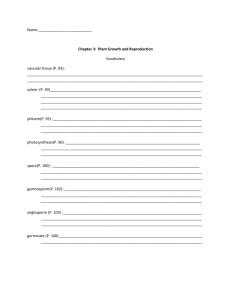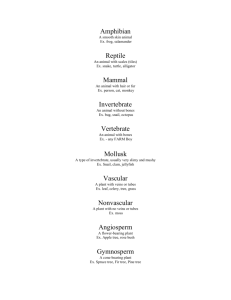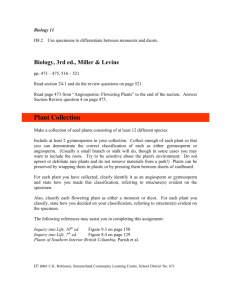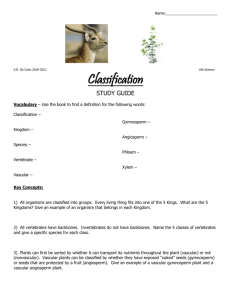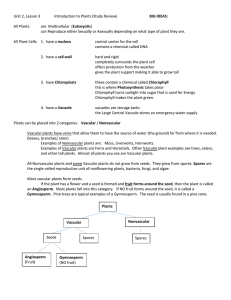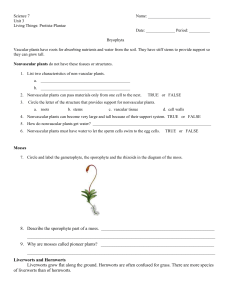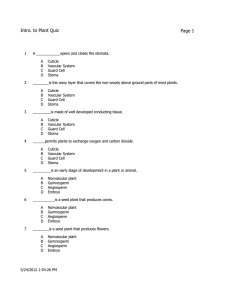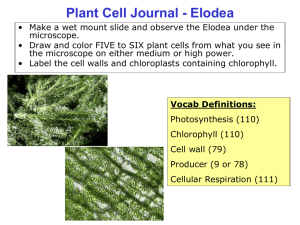Study Guide for Chapter 3 (Plants) Test Test date: Monday, April 19
advertisement
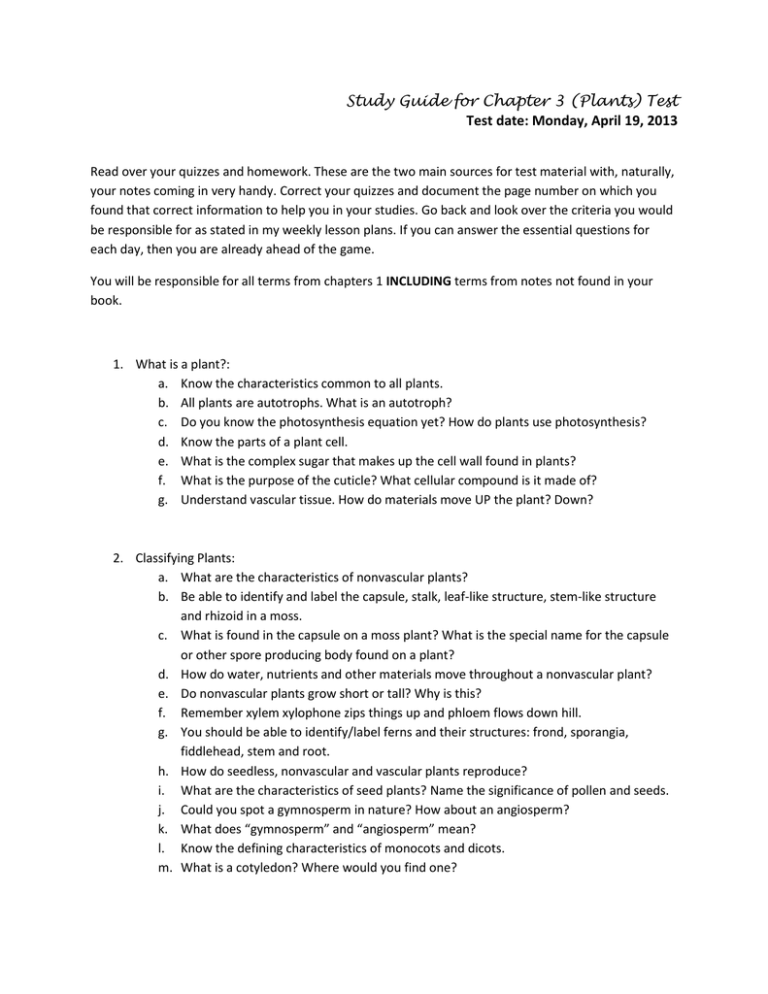
Study Guide for Chapter 3 (Plants) Test Test date: Monday, April 19, 2013 Read over your quizzes and homework. These are the two main sources for test material with, naturally, your notes coming in very handy. Correct your quizzes and document the page number on which you found that correct information to help you in your studies. Go back and look over the criteria you would be responsible for as stated in my weekly lesson plans. If you can answer the essential questions for each day, then you are already ahead of the game. You will be responsible for all terms from chapters 1 INCLUDING terms from notes not found in your book. 1. What is a plant?: a. Know the characteristics common to all plants. b. All plants are autotrophs. What is an autotroph? c. Do you know the photosynthesis equation yet? How do plants use photosynthesis? d. Know the parts of a plant cell. e. What is the complex sugar that makes up the cell wall found in plants? f. What is the purpose of the cuticle? What cellular compound is it made of? g. Understand vascular tissue. How do materials move UP the plant? Down? 2. Classifying Plants: a. What are the characteristics of nonvascular plants? b. Be able to identify and label the capsule, stalk, leaf-like structure, stem-like structure and rhizoid in a moss. c. What is found in the capsule on a moss plant? What is the special name for the capsule or other spore producing body found on a plant? d. How do water, nutrients and other materials move throughout a nonvascular plant? e. Do nonvascular plants grow short or tall? Why is this? f. Remember xylem xylophone zips things up and phloem flows down hill. g. You should be able to identify/label ferns and their structures: frond, sporangia, fiddlehead, stem and root. h. How do seedless, nonvascular and vascular plants reproduce? i. What are the characteristics of seed plants? Name the significance of pollen and seeds. j. Could you spot a gymnosperm in nature? How about an angiosperm? k. What does “gymnosperm” and “angiosperm” mean? l. Know the defining characteristics of monocots and dicots. m. What is a cotyledon? Where would you find one? 3. Plant structures: a. Describe the functions of roots, stems and leaves? b. Understand root system and structures. c. What is the function of the root cap? Know where to find it. d. Know the structure of a plant stem. e. What is produced in the cambium layer? f. How are woody and herbaceous stems distinguished from one another? g. Know how to estimate a tree’s age by counting the rings. What do these rings represent? h. Know the diagram of the leaf especially the stomata (stoma), chloroplasts and where to find these structures. i. What is transpiration? j. What gases enter and leave plant leaves? k. Know the parts of a seed and how to tell the difference between a monocot and a dicot. l. How are seeds dispersed? What is the advantage of seed dispersal? m. Know about germination. Why is it so important to keep your bird seed dry? n. Can you label a flower? I hope so, because you’ll have to do that. o. Know the parts of a flower and their purpose. 4. Plant reproduction: a. Know the two stages of a plant’s life cycle. b. A sporophyte produces a ________ or a _________ that can grow into a new organism. c. A gametophyte produces two kinds of sex cells called _________ and _________. d. What is the difference between annuals, biennials and perennials? e. Know at least one representative for each of 4d. f. How does fertilization occur in plants? What is a fertilized egg called? g. Know both the gymnosperm and the angiosperm reproductive cycle. 5. Plant responses and growth: a. Identify three stimuli that produce plant responses. What are their technical names? i. Thigmotropism, gravitropism and phototropism b. Recall that tropism is the movement toward or away from a stimulus. c. Describe “photoperiodism.” d. What is a period when a plant’s growth or activity stops? How is this beneficial for the plant? 6. As per usual, expect to be asked about the Cell Theory and Photosynthesis (the most important equation to life as we know it).
